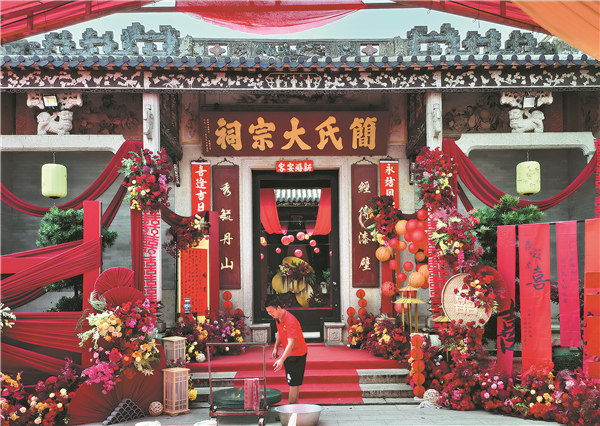

Restoration funds give new lease of life to historical structures, Zheng Caixiong reports in Guangzhou.
The restoration of a historical arch has brought many benefits, not least putting a spring back in the step of Liu Jiang.
With no small amount of pride and with obvious delight, the staff member of the Nanlang subdistrict cultural service center in Zhongshan city, Guangdong province, these days happily introduces the historical arch to visitors.
The arch, built during the Qing Dynasty (1644-1911), has both its wall base and frame constructed of red sandstone.
Due to the erosion of time, the green brick wall surface became moldy and blackened, the red sandstone wall surface weathered and damaged, while the clay sculpture on the top had also seen better days. It wasn't just cosmetic, there were definite safety hazards.
Due to lack of maintenance funds and experience, stainless steel protective fences were erected to prevent visitors and pedestrians from going too close or touching the arch.
Things changed in 2023 when the city government took the lead in Guangdong province in implementing the full coverage of the annual maintenance system for immovable cultural relics. In total, the city in the Guangdong-Hong Kong-Macao Greater Bay Area budgeted 5.46 million yuan ($767,130) to repair its immovable cultural relics last year.
Meanwhile, it introduced a trial management method for the annual maintenance subsidy funds and established an annual maintenance subsidy fund for daily maintenance and repair of the immovable relics.
Last year, Nanlang subdistrict successfully applied for 41,000 yuan from the city's annual maintenance subsidy fund and in March, successfully repaired the arch following the principle of "repairing the old as it is".
The stainless steel protective fences of the arch were removed, the wall cleaned and filled, and the tile surface and clay sculptures also grouted and restored, Liu says.
The restoration of the arch is not an isolated endeavor.